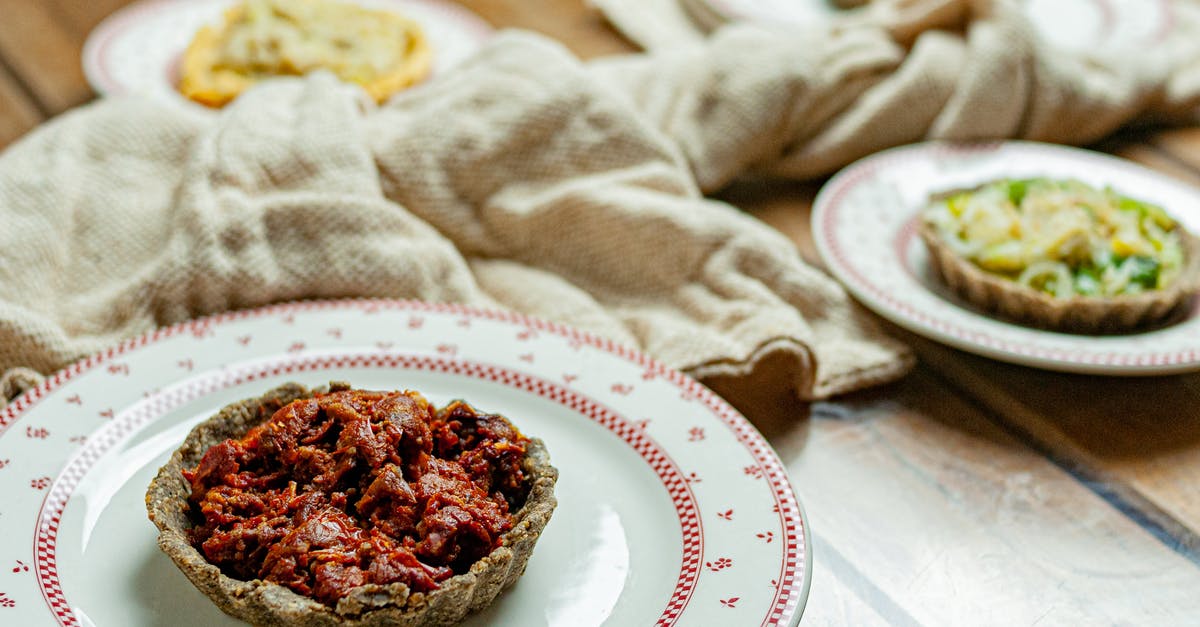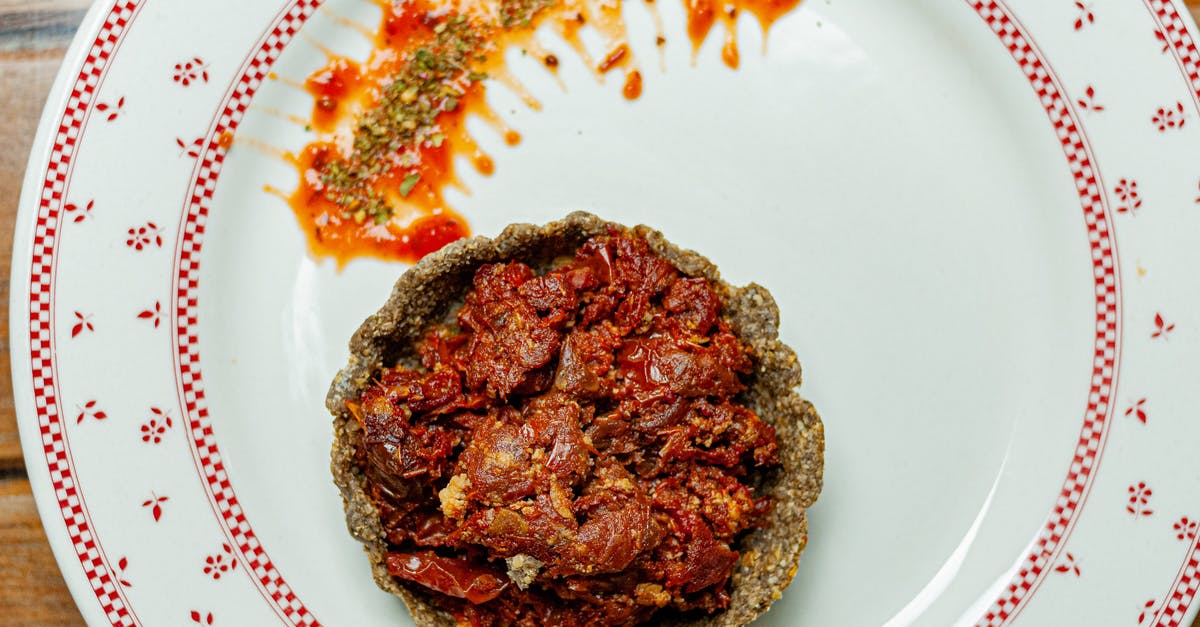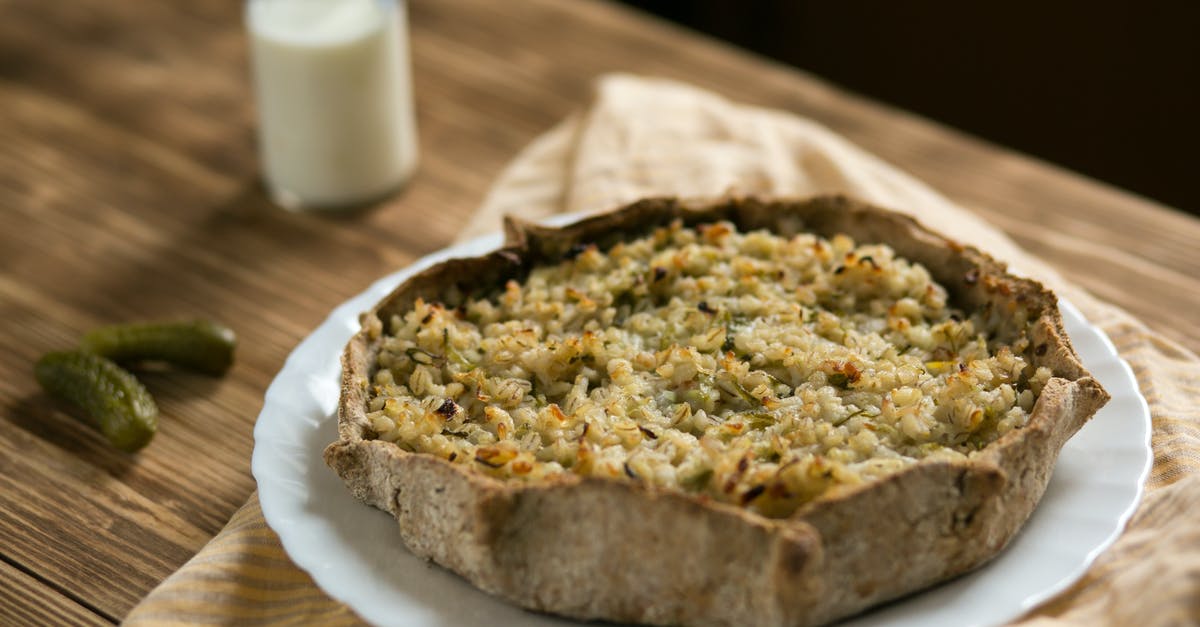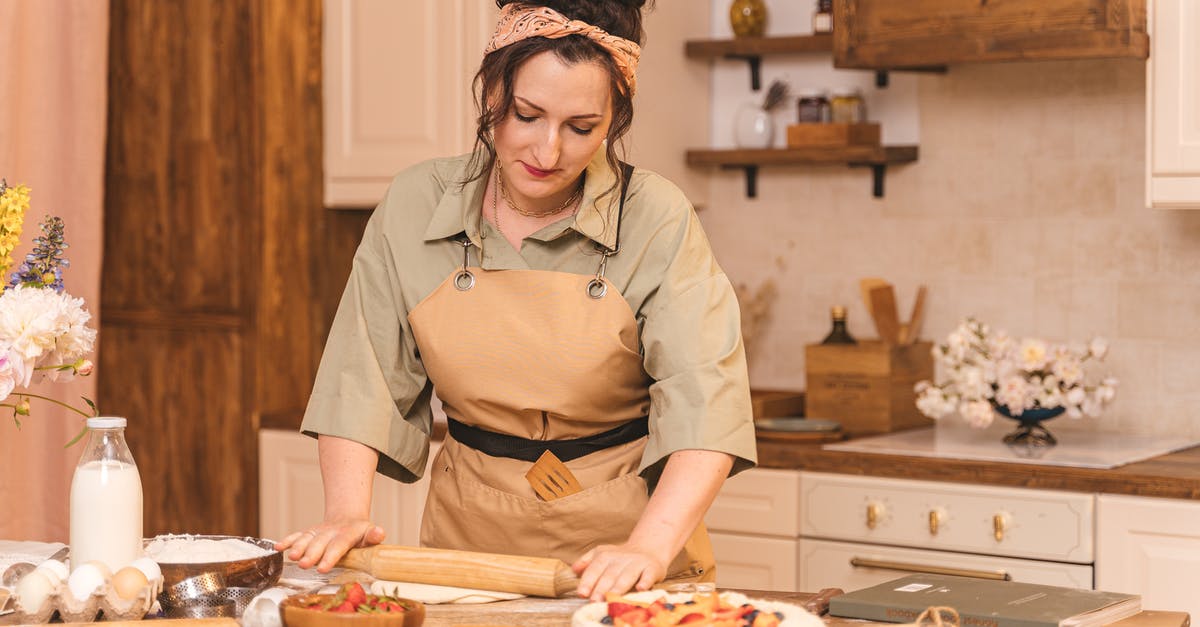Pie VS Tart VS Quiche

Pi day is coming up quickly! What are the technical differences between pie, tart and quiche? Tarts are sweet. Here are my observation so far:
- Pies can be either sweet or savoury.
- Quiches must be savoury.
- A pie can be with and without a lid. Tarts and quiches don't have lids. (See “Pie” vs “Tart”?)
- Tarts can be small. Quiches and pies are cut up and shared.
- Both pies and tarts can contain fruits.
- All have a pastry bottom.
- All may be served hot or cold, depending on the filling.
- All are rounded.
Please feel free to correct me. Sorry to be too technical. I'd like to avoid the embarrassment of bringing a tart or a quiche instead of a pie for Pi day parties.
Best Answer
Pie and tart are regional (North American versus Western European) terms for essentially the same thing. Some will argue that the pans make the difference (see below), but I don't buy that story.
There are some stylistic differences that appear quite often, but nothing that makes them truly different things:
- Pies tend to be deeper, and have more filling
- Pies tend to be made in a shallow, sloped sided baking pan called a "pie pan; whereas tarts tend to be made with only a ring, or a tart mold which consists of an outer ring with a removable bottom plate. Tart pans or rings tend to have vertical sides, not sloped ones.
- Tarts usually only have a bottom crust
- If the recipe is from France or cooks of a French cooking tradition, it tends to be called a tart; if it is from North America, it tends to be called a pie
- Pies often feature a flakey short crust, or a crumb type crust, whereas tarts often feature a pate sucre type crust, but again this is far from universal
- Pies are usually served from their pan, where tarts are almost never served from their ring—this may be as close to a defining difference as there is!
Both tarts and pies can be made in a variety of sizes, including appetizer or finger food sized, personally sized, or family sized.
In North America, sometimes a turnover (like an empanada or pastie, but hand-sized) which is baked or fried is also sometimes called a pie, hand pie, or even fried pie.
The word pie is also used in England and North America for a class of casseroles made with a top crust, such as shepherd's pie (mashed potato crust), steak and kidney pie, or chicken pot pie.
There is also the gallette which is a pastry made free form without a pan or mold, by making a crust, adding filling, and folding the sides partially over towards the center. This is essentially a free form tart or pie.
Quiches are a savory pie or tart whose filling is based on an egg based custard, often with cheese as well.
Oh... and if it is from New York, made with a yeast raised crust, and covered with cheese and hopefully pepperoni, it is definitely a pie :-)
Pictures about "Pie VS Tart VS Quiche"



What is the difference between pie tart and quiche?
Quiche is actually made with pie crust and a tart is made with a pastry crust, so according to this definition, even a pie isn't a pie but let's assume they use pie and pastry crust interchangeably. We would consider it to be a pie because it fits all the qualifications. Well, mostly.What is the difference between tart and pie?
PiesTarts \u2013 If you've ever thought a tart was pie, you're forgiven because they're incredibly similar. The main difference is that tarts only have a bottom crust, and the crust is much thicker than a pie crust.Is quiche same as pie?
Quiche has a custard filling, while pies have an egg-based cream filling. Pies tend to be deeper than quiches. Quiches are baked in the oven at a lower heat for a longer period of time. Quiches tend to have a crust made from savory rather than sweet ingredients.Is tart and quiche pan the same?
Round tart pans are also sometimes referred to as quiche pans. With their upright sides, you get more filling into the shell and a neater, more regular slice of quiche when serving. Quiche is also sometimes baked in a ceramic or fired clay pan that resembles a tart pan but that doesn't have a removable bottom.Know Your Food Differences: Pie Vs Tart
Sources: Stack Exchange - This article follows the attribution requirements of Stack Exchange and is licensed under CC BY-SA 3.0.
Images: Dayvison de Oliveira Silva, Dayvison de Oliveira Silva, Daria Andrievskaya, ANTONI SHKRABA production
